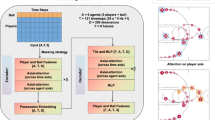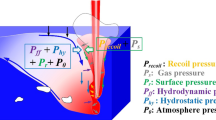Abstract
When constructing the algorithm model of sports training action classification, the accuracy of action classification has an important impact on the algorithm model. How to improve the algorithm model to improve the accuracy of sports training action classification needs further research. Based on BP neural network algorithm, this paper carries out the modeling of BP neural network signal classification algorithm and the construction of BP neural network, and deduces the BP algorithm in detail. Firstly, this paper applies genetic algorithm to the initial parameter selection of BP algorithm to avoid the local optimization problem. When carrying out chromosome coding, binary coding is easy to cause the problem of too long coding string, which also needs to be restored and decoded. The algorithm runs too long and the learning accuracy is not high. Therefore, this paper uses real coding. Through simulation analysis, it can be seen that the classification accuracy of the improved algorithm model is significantly higher than that of the simple BP algorithm. In addition, this paper analyzes the requirements of the sports training management visualization system, introduces the system structure framework and network topology, describes in detail the functions of the user information management module, the training plan management module, the training test management module, the competition information management module and the scientific research information management module, and tests the visualization function of the system. Finally, this paper analyzes the problems existing in the current sports training management, and puts forward the development strategy of sports training management based on this, which lays a theoretical foundation for the scientific development of sports training.







Similar content being viewed by others
Data availability
Data will be made available on request.
References
Alahakone AU, Senanayake A (2010) A real-time interactive biofeedback system for sports training and rehabilitation. Proc Inst Mech Eng Part P J Sports Eng Technol 224(2):181–190
Cheng T, Teizer J (2013) Real-time resource location data collection and visualization technology for construction safety and activity monitoring applications. Autom Constr 34:3–15
Cui K, Jing X (2019) Research on prediction model of geotechnical parameters based on BP neural network. Neural Comput Appl 31(12):8205–8215
Cui K, Qin X (2018) Virtual reality research of the dynamic characteristics of soft soil under metro vibration loads based on BP neural networks. Neural Comput Appl 29(5):1233–1242
Daniłowicz-Szymanowicz L, Figura-Chmielewska M, Ratkowski W, Raczak G (2013) Effect of various forms of physical training on the autonomic nervous system activity in patients with acute myocardial infarction. Kardiologia Polska (polish Heart J) 71(6):558–565
Ding S, Su C, Yu J (2011) An optimizing BP neural network algorithm based on genetic algorithm. Artif Intell Rev 36(2):153–162
Dugalić S (2011) Risk management in sports and sports organizations. Sport Sci Pract 2:67–78
Guo ZH, Wu J, Lu HY, Wang JZ (2011) A case study on a hybrid wind speed forecasting method using BP neural network. Knowl Based Syst 24(7):1048–1056
Guo H, Yu Y, Skitmore M (2017) Visualization technology-based construction safety management: a review. Autom Constr 73:135–144
Khanduzi R, Sangaiah AK (2023) An efficient recurrent neural network for defensive Stackelberg game. J Comput Sci 67:101970
Lin C, Gao J, Zheng H et al (2019) When to introduce three-dimensional visualization technology into surgical residency: a randomized controlled trial. J Med Syst 43(3):1–7
Michalakis K, Aliprantis J, Caridakis G (2018) Visualizing the internet of things: naturalizing human-computer interaction by incorporating AR features. IEEE Consum Electron Mag 7(3):64–72
Muhammad T, Halim Z (2016) Employing artificial neural networks for constructing metadata-based model to automatically select an appropriate data visualization technique. Appl Soft Comput 49:365–384
Nurbekova Z, Grinshkun V, Aimicheva G et al (2020) Project-based learning approach for teaching mobile application development using visualization technology. Int J Emerg Technol Learn (iJET) 15(8):130–143
Sangaiah AK, Rezaei S, Javadpour A, Zhang W (2023) Explainable AI in big data intelligence of community detection for digitalization e-healthcare services. Appl Soft Comput 136:110119
Wang Z, Wang F, Su S (2011) Solar irradiance short-term prediction model based on BP neural network. Energy Procedia 12:488–494
Wong AK, Davis GB, Nguyen TJ et al (2014) Assessment of three-dimensional high-definition visualization technology to perform microvascular anastomosis. J Plast Reconstr Aesthet Surg 67(7):967–972
Xia L, Lv J, Liu D (2019) A motion classification model with improved robustness through deformation code integration. Neural Comput Appl 31(12):8519–8532
Yang A, Zhuansun Y, Liu C et al (2019) Design of intrusion detection system for internet of things based on improved BP neural network. IEEE Access 7:106043–106052
Yuan R, Zhang Z, Song P et al (2020) Construction of virtual video scene and its visualization during sports training. IEEE Access 8:124999–125012
Zhang C, Ding J, Zhan J, Sangaiah AK, Li D (2022) Fuzzy intelligence learning based on bounded rationality in IoMT systems: a case study in Parkinson’s disease. In: IEEE transactions on computational social systems. https://doi.org/10.1109/TCSS.2022.3221933
Funding
The authors have not disclosed any funding.
Author information
Authors and Affiliations
Corresponding author
Ethics declarations
Conflict of interest
The authors declare that they have no conflict of interests.
Ethical approval
This article does not contain any studies with human participants performed by any of the authors.
Additional information
Publisher's Note
Springer Nature remains neutral with regard to jurisdictional claims in published maps and institutional affiliations.
Rights and permissions
Springer Nature or its licensor (e.g. a society or other partner) holds exclusive rights to this article under a publishing agreement with the author(s) or other rightsholder(s); author self-archiving of the accepted manuscript version of this article is solely governed by the terms of such publishing agreement and applicable law.
About this article
Cite this article
Zhao, Y. Application of BP neural network algorithm in visualization system of sports training management. Soft Comput 27, 6845–6854 (2023). https://doi.org/10.1007/s00500-023-08116-w
Accepted:
Published:
Issue Date:
DOI: https://doi.org/10.1007/s00500-023-08116-w




